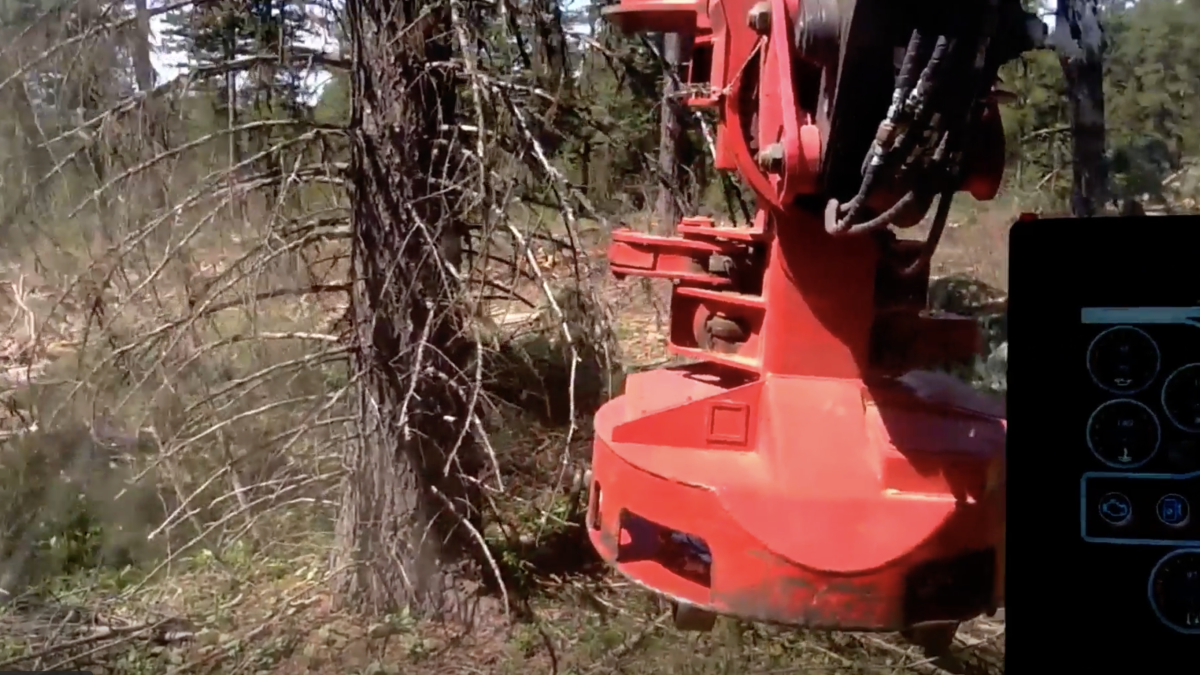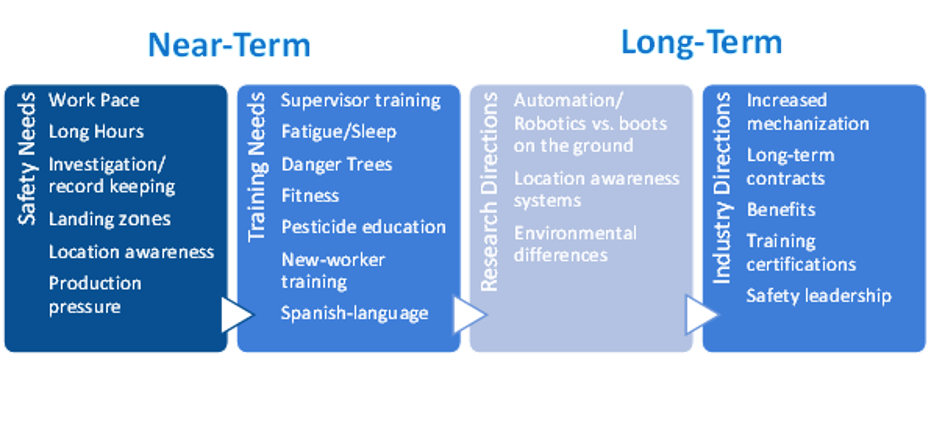
The last decade has seen major shifts in logging technology adoption (increased mechanization) and workforce (high worker turnover and increasingly Spanish-speaking). Logging has a relatively small workforce, yet injuries are often severe and occur at a rate that makes it the nation's most dangerous occupation. US Bureau of Labor Statistics shows logging has the highest fatality rate, 28 times the average worker. There have been great improvements in technology with tethered machine logging, which is transforming logging for the steep slopes in the West and moving more big landowners to adopt ‘No boots on the ground’ policies.
"My advice is to listen to loggers– I've learned a lot more about safety by talking less and allowing them to tell me about what they do, the problems that the face, and solutions that they have come with. I truly believe that we are all in this together, we are an industry of one."
- Edward Boulch, Washington Logger Safety Initiative.
Safety is largely the responsibility of the employer (the logging contract company), although recent years have seen distribution of liability across multiple players, and landowners are paying more attention to their role in safety. Logging contractors bid on jobs offered by public and private landowners. While loggers have direct control of operations at the job site, it is under the ecological management direction (forestry ‘prescription’) of the landowners' foresters, which can have substantial influence on safety. State logging associations also play a key role in supporting logging contractors and truckers, including safety training and planning, often cooperating closely with state Occupational Safety and Health programs and workers’ compensation insurers to reduce risk and insurance premium rates.
Although safety issues are being given more consideration across the logging industry, critical safety needs remain. Below are two examples of major efforts to understand the needs of loggers, by talking to them directly and listening to their concerns.
Northwest
With the aim of identifying regional priorities to improve the Northwest region’s high fatality and injury rates in logging and forestry services work, PNASH began a series of needs assessments with key stakeholder groups – loggers, log truck drivers, forestry services workers, contract firm owners, forestry safety trainers, consultants and researchers. Collaborations were fostered in a regional summit with participants, including logging safety consultants and leaders, across the Northwest. Following the Summit, presentations were made at state logging safety meetings over 2018-2019 in Washington, Oregon, and Idaho, where live audience polls were conducted to characterize loggers’ top logging safety and health priorities.
475 loggers revealed their top safety and health priority needs, including: struck-bys; falls, slips & trips; overexertion; vehicle crashes. These stakeholder viewpoints mirror the top hazards we see in workers compensation injury data.
Most importantly, stakeholders spoke to several common themes and future paths for supporting logger safety and health.

Fundamentally, the needs we heard from loggers have to be understood with the context that this is an industry that has made great improvements in safety and is positioned to continue. As an industry, forestry is currently providing greater pay and job opportunity than many other rural jobs. Our studies showed the workforce often is in good physical health, although there are concerns over fitness for machine operators and aging loggers. Also, there were signs of high job satisfaction in recent logger interviews.
Nationwide
In 2023, AgriSafe Network completed a small pilot project to explore and understand the health and safety concerns of the forestry workforce through an open-ended interview approach. The project was titled “Listening to the Forestry and Timber Harvesting Workforce.” Interviews were completed from the Northwestern, Southern, and Northeastern regions of the United States. The majority of those interviewed were supervisors and/or logger/owners.
Themes of financial stress, liability risks, and work/life balance were common threads across the regions. Personal stressors were associated with safety, work/life balance, and financial challenges as well as their concerns related to the impact of crew members’ lifestyle choices on work safety and health. Access to healthcare was not seen as a problem. However, open-ended questions about receiving adequate healthcare revealed concerns about healthcare/insurance costs, health system workflows, healthcare accessibility for crew members, and limitations of specialty care in rural communities.
Most subjects cited that safety content was adequately covered by current required trainings. Surprisingly, there was a stated need for content related to general health, chronic illnesses, well-being/mental health, communication and financial skills education for crews and new employees. While many of the loggers/owners recognized their own personal challenges with work life balance, they also expressed concerns regarding mental well-being, and substance use as it related to securing and maintaining a reliable crew workforce.
These interviews suggested incorporating Total Worker Health® principles to support workers’ health and safety both on the job and at home may improve the work and personal life skills of the workforce. Additionally, the subjects were very willing to reflect and offer their insights on mental well-being and its relationship to work. This finding seemed to challenge the idea that stigma and beliefs about behavioral health in the logging workforce make it difficult to engage in this topic. Perhaps it’s just that conversations concerning mental health are not happening enough within the workforce. These stakeholder-engaged needs assessments are a roadmap for future work to improve logging and forestry services safety and health. Continued efforts to pull together these collective voices are needed if we are to transform and improve safety and health for the timber harvesting industry.
Marcy Harrington, MPA, is the Senior Research Coordinator for the Pacific Northwest Agricultural Safety and Health Center, a NIOSH-Agricultural Center, based at the University of Washington Department of Environmental and Occupational Health Sciences.
Tara Haskins, DNP, RN, AHN-BC, Total Farmer Health Director, AgriSafe Network, a national agriculture health and safety nonprofit.
Jennifer Lincoln, PhD, CSP, is the Associate Director of the NIOSH Office of Agriculture Safety and Health.
Kitty Hendricks, MA, is a Research Health Scientist for the NIOSH Division of Safety Research and the Assistant Coordinator for the NIOSH Agriculture, Forestry and Fishing Program.


